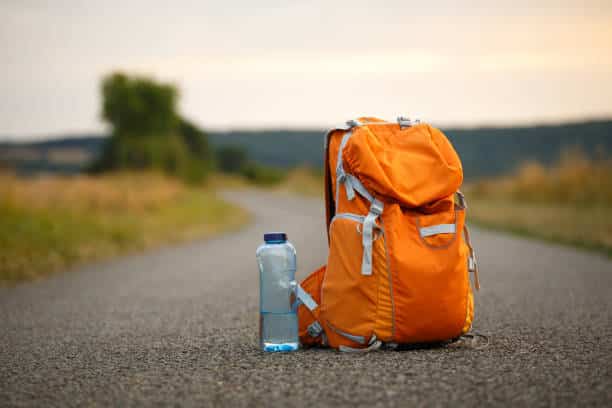Introduction
Efficaciously organizing a backpack is essential for keeping all your supplies and belongings neat and easily accessible. Whether you’re a seasoned traveller or a student preparing for a busy day, a well-organized backpack can make all the difference. By implementing simple strategies and incorporating practical tools, you can make the most of your backpack’s storage space and streamline your daily routine. This how-to guide will explore effective techniques for organizing your backpack to maximize efficiency while minimizing clutter. Say goodbye to rummaging through a disorganized mess and hello to a perfectly organized backpack that meets all your needs.

Key Takeaways:
- Reduce the Weight: Prioritize the essentials and consider the weight of each item to minimize the load on your back.
- Use Packing Cubes: Keep your backpack organized and optimize space with packing cubes for different categories of items.
- Utilize Compartments: Choose a backpack with multiple compartments to easily access your gear and maintain order.
- Follow a System: Establish a packing system that works for you, such as packing in layers or having designated compartments for specific items.
- Keep Frequently Used Items Handy: Place items you need to access often in easily reachable external pockets or the top of the main compartment.
- Balance the Load: Distribute weight evenly within the backpack to prevent strain on your back and shoulders.
- Regularly Assess and Adjust: Re-evaluate your packing arrangement and adjust as needed to maintain organization and comfort throughout your journey.
Factors to Consider Before Organizing
One of the most crucial steps before organizing your backpack is to consider a few key factors that will impact how you pack. Taking the time to carefully think through these factors will lead to a more efficient and successful packing process. Any oversight considering these factors could result in an unorganized and impractical backpack.
Backpack Size and Capacity
Organizing your backpack starts with understanding its size and capacity. It’s important to know the limitations of your backpack in terms of how much it can hold and what size items will fit comfortably. Consider the main compartment’s dimensions and any additional pockets or compartments that may affect the overall capacity. Remember the importance of utilizing the space efficiently and distributing weight evenly to ensure a balanced load when organising your backpack.

Purpose and Duration of Trip
The purpose and duration of your trip should influence Trip Organizing your backpack. Are you embarking on a day hike, an overnight camping trip, or a week-long backpacking adventure? Your trip length and planned activities will greatly impact what items you need to pack. It’s essential to consider your trip’s specific requirements and challenges to ensure you have everything you need without carrying unnecessary items that will weigh you down.
Packaging only what is necessary for your trip is crucial, considering the activities and duration of your adventure.
Weather and Environment
Organizing your backpack also involves considering the weather and environment you will encounter on your trip. Whether trekking through a hot and sunny climate or braving cold and wet conditions, it is essential to pack accordingly. The type of terrain and environment you will be in will also impact the gear and clothing you will need to bring along. Consider the potential for rain, extreme temperatures, and any specific gear needed for the environment you will be travelling in.
Packaging versatile and weather-appropriate gear and clothing is important to ensure you are prepared for weather or environmental conditions.
Personal Needs and Preferences
Organizing your backpack should take into consideration your personal needs and preferences. Everyone has individual requirements and comfort items they prefer to have during their trip. Whether it’s specific medications, personal hygiene products, or comfort items such as a favourite snack, it’s important to make space for them while not overpacking. Consider your unique needs and make strategic decisions about what to bring based on the specific requirements of your trip.
This includes taking into account any personal comfort items or specific needs you may have, ensuring you are properly prepared for your journey.

How-to: The Basics of Backpack Organization
Now that you’ve decided to organise your backpack, let’s start with the basics. A well-organized backpack can make a difference on any trip, whether a day hike or a backpacking expedition. Properly organizing your backpack ensures you have everything at your fingertips and minimizes the risk of losing or forgetting essential items.
Choosing the Right Compartments
Choosing the right compartments for your items is crucial for efficient backpack organisation. The key is to categorize your belongings and allocate specific spaces for each category. Here’s a breakdown of how to choose the right compartments:
| Categories | Compartments |
| Clothing | Main compartment and side pockets |
| Hydration | Internal hydration sleeve or external water bottle pocket |
| Electronics | Padded laptop sleeve or designated electronics pocket |
This approach lets you easily access what you need without digging through your entire backpack.
Layering Items Strategically
How you layer your items in your backpack can significantly impact your organization. Start by placing heavier and bulkier items closer to your back, followed by lighter items. This strategic layering helps maintain proper weight distribution and keeps the center of gravity closer to your body, reducing strain and discomfort during your adventure.
Backpack organization is critical for efficiently accessing your gear, maximizing space, and maintaining comfort during your journey. Proper layering of items ensures that heavy items are close to your back, while lighter items are placed towards the front and top of the backpack.
Balancing Weight Evenly
Backpack weight distribution is essential in ensuring comfort and reducing strain during your adventure. When packing your backpack, distribute the weight evenly on both sides and across the compartments. This balance helps minimize your shoulders and back strain, making for a more comfortable and enjoyable experience.
Any well-organized backpack should prioritize even weight distribution to prevent muscle strain and fatigue. Balancing the weight evenly ensures a more comfortable and stable hiking experience, minimizing the risk of shoulder or back discomfort.
Accessing Essentials with Ease
Essentials such as snacks, a map, or a flashlight should be easily accessible during your outdoor adventure. Arranging these items in your backpack’s outer pockets or top compartment allows quick and convenient access without unpacking the entire bag.
Layering these essentials in easily accessible pockets or compartments ensures that you can retrieve them quickly without disrupting the organization of your larger gear. This strategic placement saves time and prevents frustration when grabbing an item.
Advanced Organization Tips
To take your backpack organization to the next level, consider the following advanced tips:
- Utilizing Packing Aids: packing cubes, compression sacks, and stuff sacks can help compartmentalize and compress your belongings for easier organization.
- Adapting to Changing Circumstances: staying flexible and adjusting your packing strategy based on your itinerary and activities can help optimize space and efficiency.
- Multi-Use Items for Space Saving: choosing items that serve multiple purposes can help save space and reduce the number of individual items you need to pack.
- Maintenance and Upkeep of Backpack Organization: regular maintenance and organization routines can help keep your backpack tidy and functional throughout your travels.
Utilizing Packing Aids
The key to efficient packing is utilizing packing aids such as packing cubes and compression sacks. These aids can help you separate different types of items, compress clothing, and maximize space within your backpack. By using these aids, you can easily access specific items without having to rummage through your entire backpack.
Furthermore, stuff sacks can compartmentalize dirty laundry, shoes, or other bulky items, keeping them separate from your clean clothes and saving space within your backpack.
Adapting to Changing Circumstances
To maintain optimal organization in your backpack, it is essential to adapt to changing circumstances. This involves reassessing your packing strategy based on the activities and destinations you encounter during your travels. It may require repacking your backpack to accommodate new items or rearranging your belongings to optimize space and accessibility.
It is important to stay adaptable and open to adjusting your organization methods as needed, ensuring that your backpack remains tidy and efficient throughout your journey.
Maintaining a flexible approach to organization is essential, ensuring that your backpack remains organized and functional under diverse travel circumstances. Adaptability is key in optimizing space and efficiency.
Multi-Use Items for Space Saving
Organization can be enhanced by selecting multi-use items that serve multiple purposes. For example, a sarong can double as a beach towel or a lightweight blanket, reducing the need to pack multiple bulky items. Similarly, a versatile backpack with detachable compartments can adapt to varying storage needs, providing flexibility in organization.
With a focus on multi-use items, you can streamline your packing process and maximize the utility of each item in your backpack, ultimately saving space and reducing clutter.
Maintenance and Upkeep of Backpack Organization
In the long run, saving time and effort requires regular maintenance and upkeep of your backpack organization. Implementing routine checks and reorganizations can help prevent clutter from accumulating and ensure that items are readily accessible when needed. Also, properly storing and handling multi-use items can prolong their lifespan and usefulness, contributing to efficient backpack organization.
Multi-use items, such as packing aids and versatile gear, can contribute to your backpack organisation’s overall maintenance and upkeep. By prioritizing the care and organization of these items, you can sustain a functional and organized backpack throughout your travels.
Conclusion
Considering this, organizing a backpack can greatly improve efficiency and reduce stress during travel or everyday use. By categorizing and prioritizing items, utilizing storage compartments, and distributing weight evenly, individuals can ensure that their backpacks are well-organised and comfortable to carry. This simple but effective task can significantly impact the overall experience of using a backpack, making it a worthwhile practice to adopt. With these tips, individuals can maintain control over their belongings and be prepared for any situation.
FAQ
Q: Why is it important to organize a backpack?
A: Organizing a backpack is important because it helps ensure you have everything and can easily find items when needed. It also prevents items from getting lost or damaged.
Q: What are some tips for organizing a backpack?
A: Some tips for organizing a backpack include packing cubes or pouches to separate items, compartments or pockets, and using organizational tools such as carabiners or elastic bands to keep items in place.
Q: How should I pack heavy items in my backpack?
A: Heavy items should be packed closer to your back and towards the bottom of the backpack to help distribute the weight evenly and prevent strain on your shoulders and back.
Q: What are some essentials to always carry in a backpack?
A: Essentials to always carry in a backpack include a water bottle, first-aid kit, snacks, a multi-tool, and a small flashlight. It’s also important to carry any necessary medication, identification, and emergency contact information.
Q: How should I organize my electronics in my backpack?
A: Electronics should be stored in padded cases or pouches to protect them from damage. Cords and charging cables should be neatly coiled and secured to prevent tangling.
Q: What should I do if my backpack is too heavy or bulky?
A: If your backpack is too heavy or bulky, consider re-evaluating the items you carry and removing non-essential items. You can also invest in a backpack with a better weight distribution system or consider using a rolling backpack for heavier loads.
Q: How often should I reorganize my backpack?
A: It’s a good idea to reorganize your backpack after each trip or outing to ensure that items are replenished and reorganized. Additionally, check your backpack regularly for expired or damaged items needing replacement or removal.
